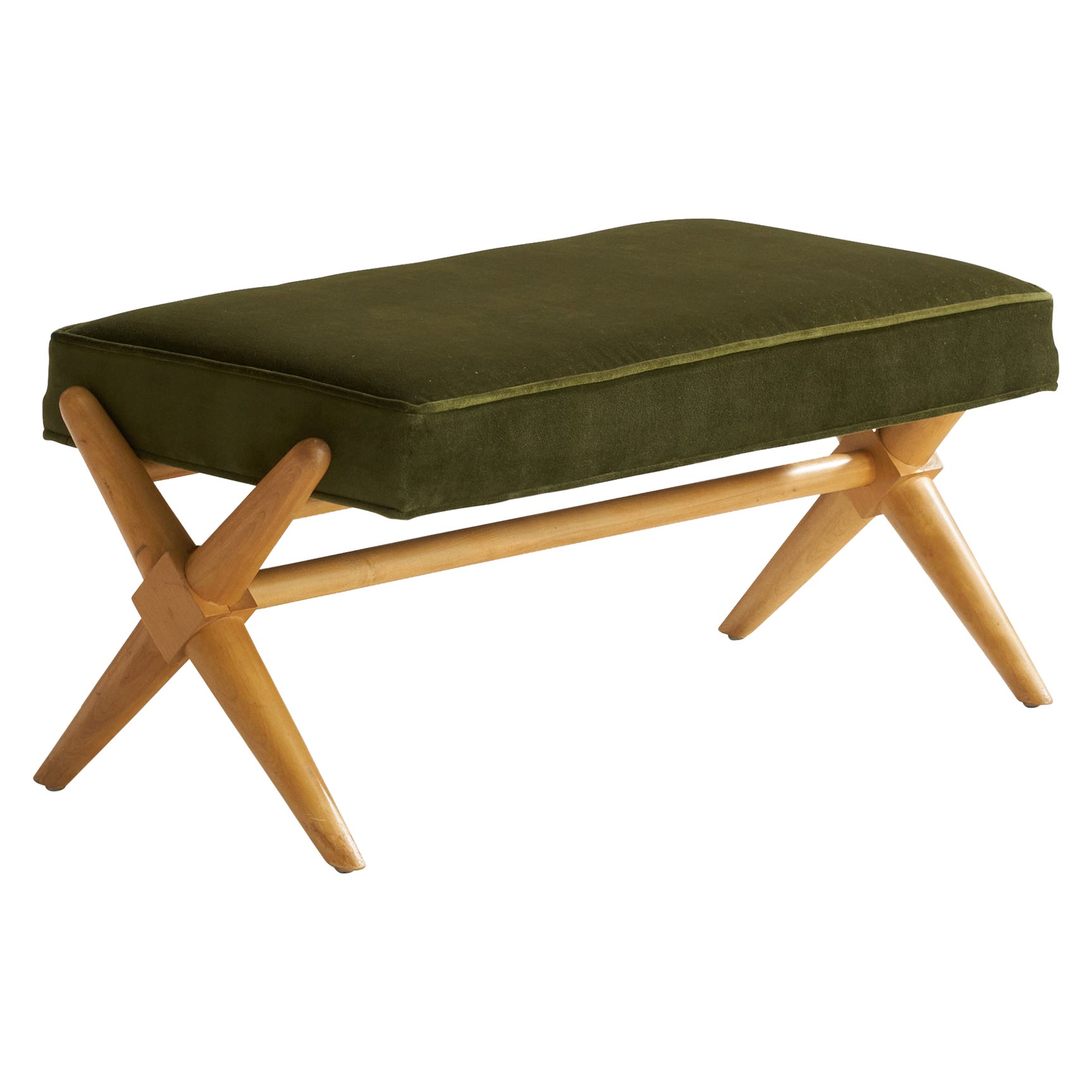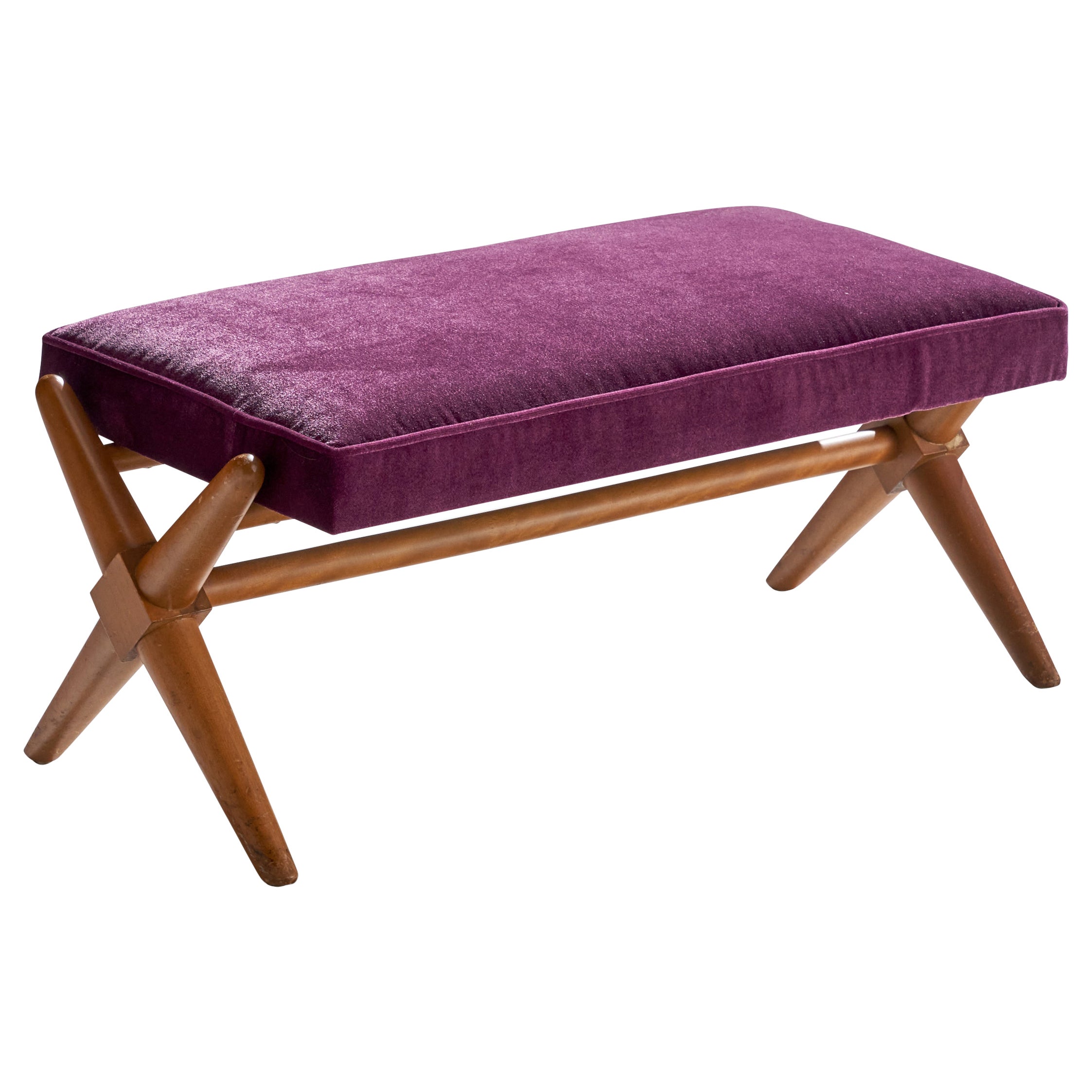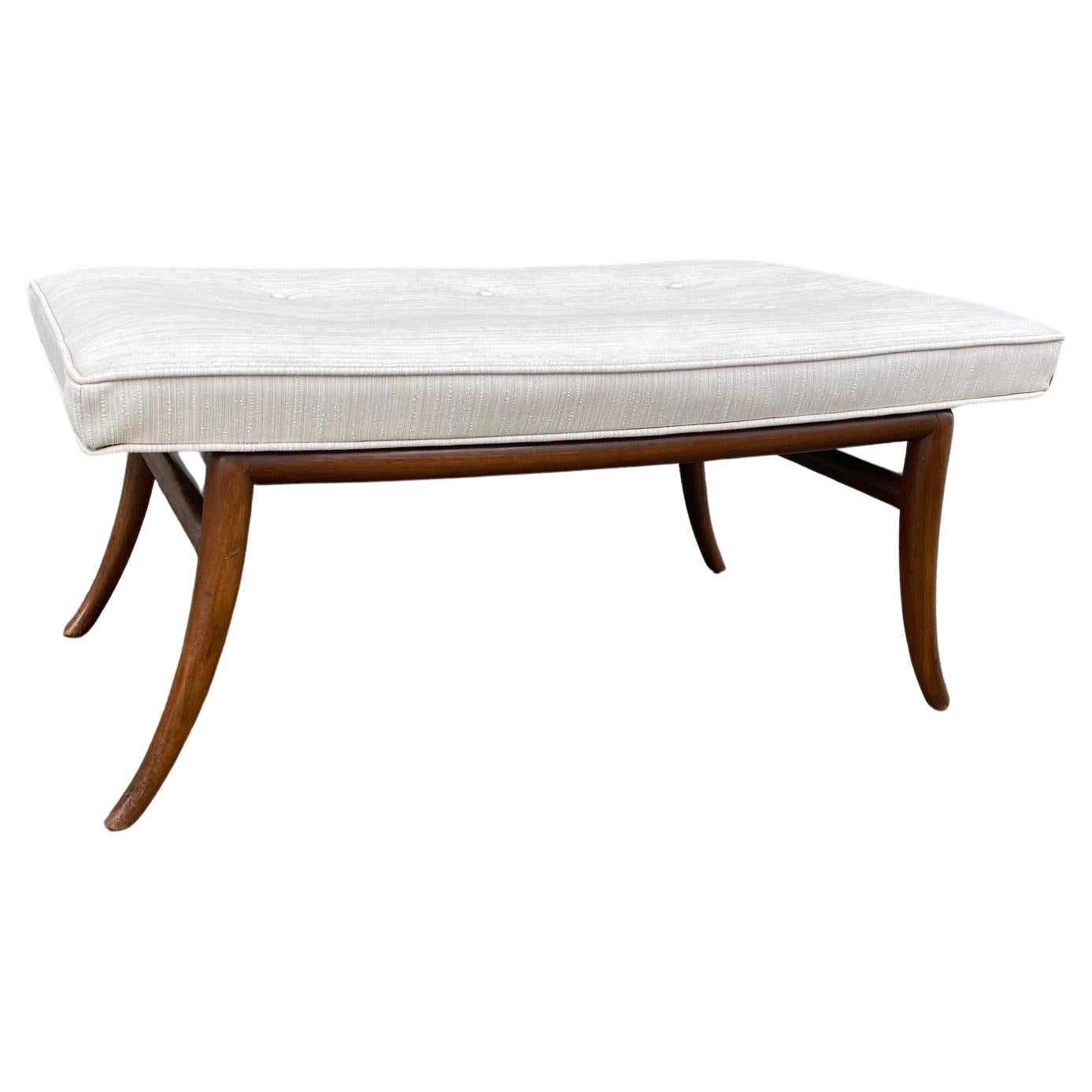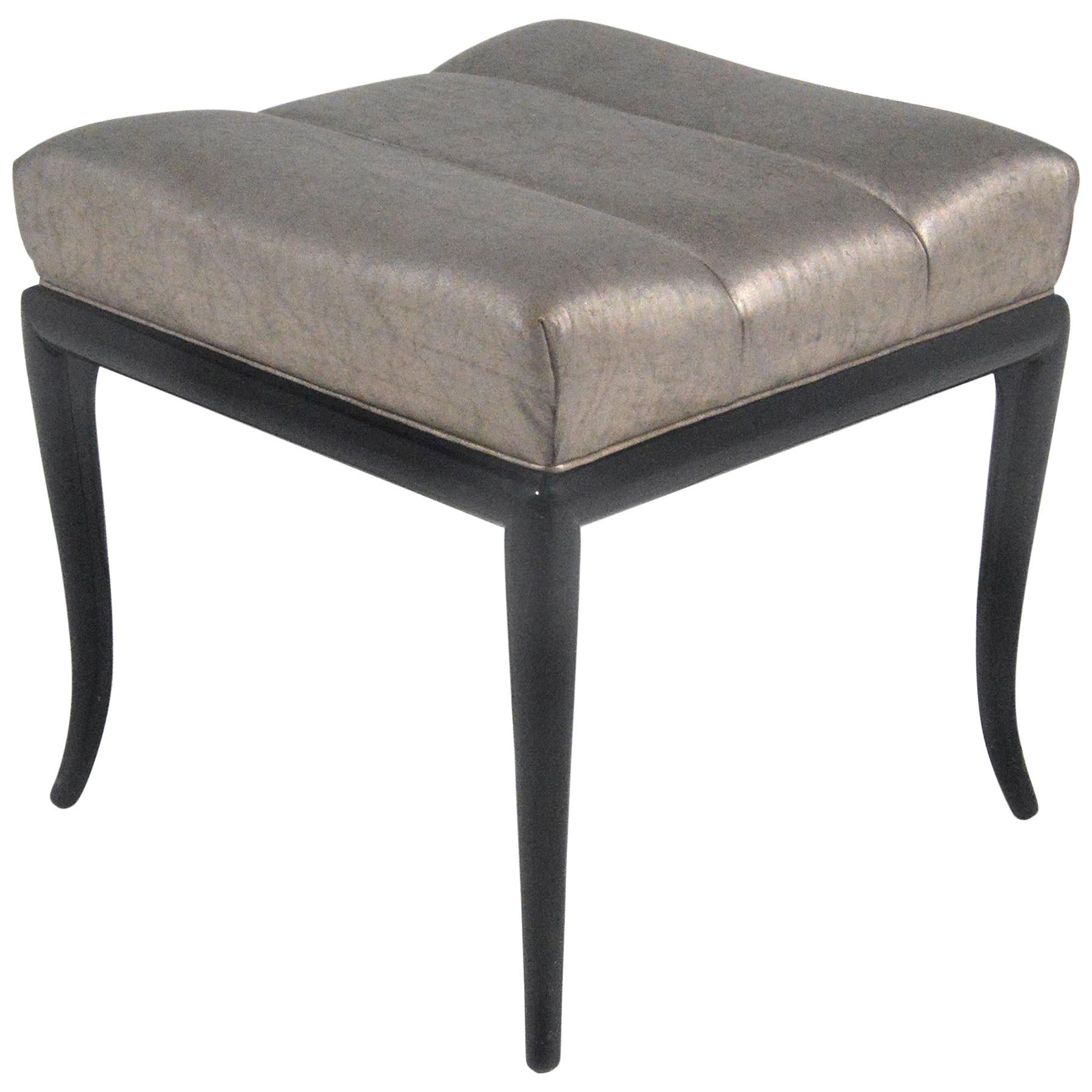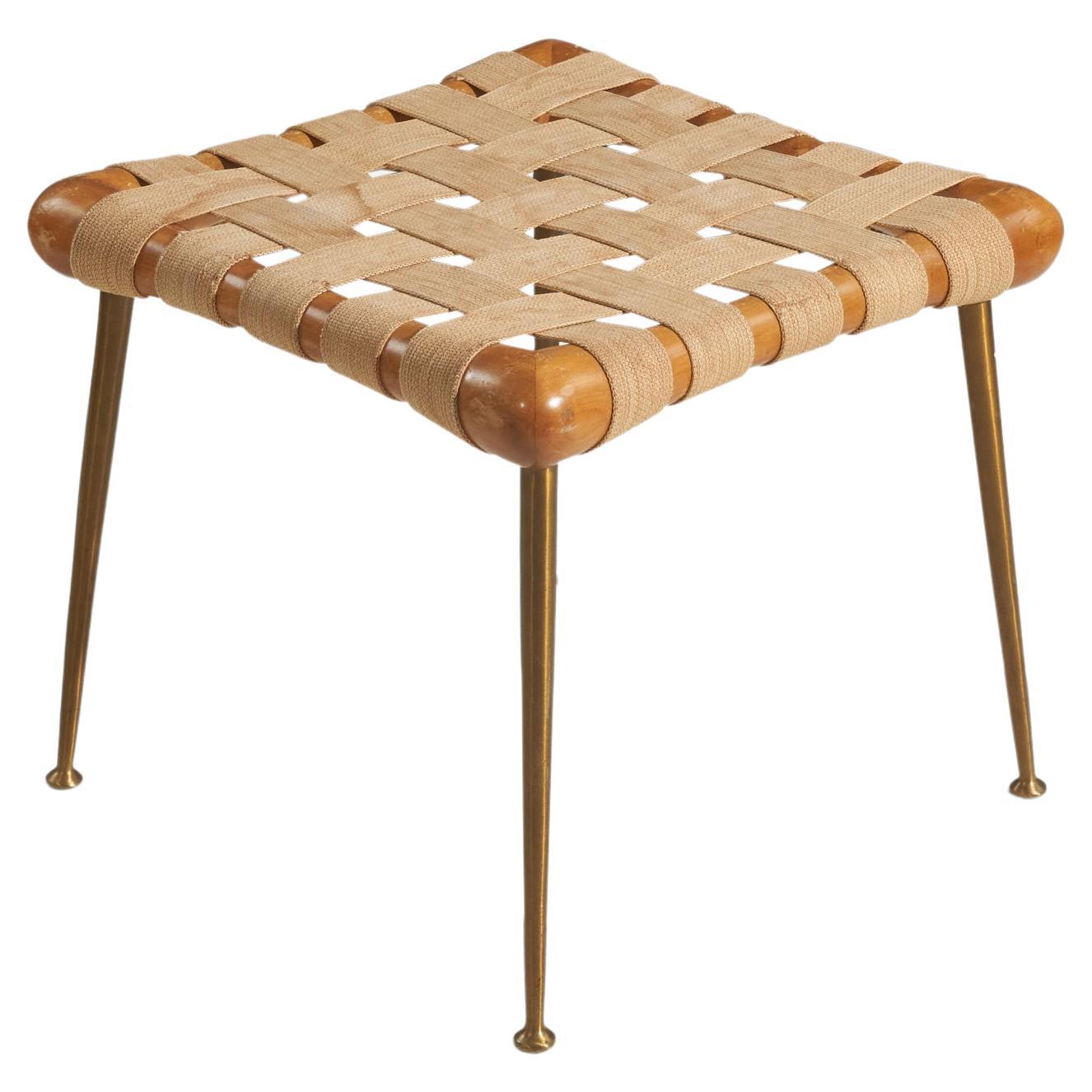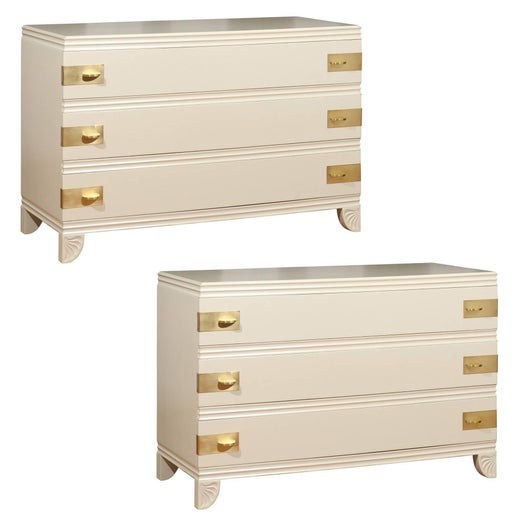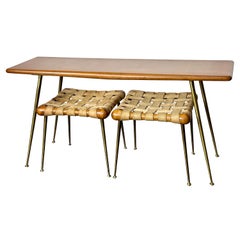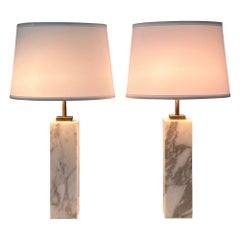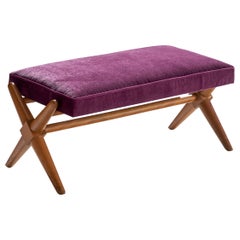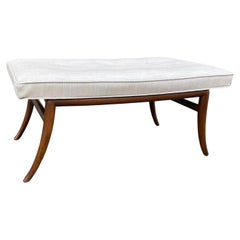TH Robsjohn Gibbings for Widdicomb X Base Upholstered Bench circa 1950s
About the Item
- Creator:T.H. Robsjohn-Gibbings (Designer),Widdicomb Furniture Co. (Manufacturer)
- Dimensions:Height: 14.5 in (36.83 cm)Width: 33.75 in (85.73 cm)Depth: 17.5 in (44.45 cm)
- Style:Mid-Century Modern (Of the Period)
- Materials and Techniques:
- Place of Origin:
- Period:
- Date of Manufacture:circa 1950s
- Condition:Reupholstered. Wear consistent with age and use. Seat has been newly upholstered. Base is in excellent original condition with very minor age and use related wear.
- Seller Location:Troy, MI
- Reference Number:1stDibs: LU8950236458112
T.H. Robsjohn-Gibbings
British-born designer, interior decorator and author T.H. Robsjohn-Gibbings was one of the great American tastemakers in the middle decades of the 20th century. Much like Edward Wormley, Robsjohn-Gibbings was a design classicist by education and inclination, but he would come to create some of the most gracious and livable modern furnishings of the era.
Robsjohn-Gibbings studied architecture at the University of London, then held various jobs that included designing décors for passenger liners and working as the art director of a film studio. In the early 1930s, while employed by the upper-crust interior designer Charles J. Duveen, Robsjohn-Gibbings experienced an epiphany during a visit to the British Museum.
Examining the furniture depicted on ancient Greek ceramics — lithe stools and klismos chairs — he realized that he had found a design touchstone. By 1936, Robsjohn-Gibbings had moved to New York and set up a showroom on Madison Avenue for his modern reinterpretations of Classical Greek designs. Aided by contacts he’d developed while working with Duveen, he quickly established a clientele that included Elizabeth Arden, Doris Duke and Thelma Chrysler Foy.
Through his writings for magazines and books, Robsjohn-Gibbings earned a public following and was established as an urbane arbiter of taste. From 1943 to 1956, he produced an understated line of modernist furnishings for Widdicomb, which included one of the icons of the period: the tiered, biomorphic Mesa coffee table (1951). Robsjohn-Gibbings moved to Athens, Greece, in 1966, and created a new line of antiquity-inspired pieces for the firm Saridis. The series turned out to be his swan song.
Collectors’ interest in Robsjohn-Gibbings was reignited in the 1980s when the 200-plus pieces from his 1936–38 commission for the Bel-Air estate of Los Angeles socialite Hilda Boldt Weber — pared-down neoclassical pieces rendered in blond wood (with the occasional flourish) — came on the market. (Up until then, the collection had remained in the house, despite its having changed hands several times.)
But his work for Widdicomb remains his most widely known, appreciated for its elegance and generous proportions. Robsjohn-Gibbings despised the stern aesthetic associated with his Bauhaus contemporaries, and a keynote of his modernist pieces is that they have no sharp angles. His chair and sofa frames, table legs and even many cabinets feature softly contoured edges. In whatever style he designed, Robsjohn-Gibbings was guided by simplicity and timelessness. He wanted his furniture to be lived with happily.
Find antique T.H. Robsjohn-Gibbings coffee tables, dining tables, credenzas and other furniture on 1stDibs.
Widdicomb Furniture Co.
Admirers of vintage mid-century modern furnishings likely recognize the Widdicomb Furniture Company name for the fruitful partnerships it forged with iconic designers such as Frank Lloyd Wright, T.H. Robsjohn-Gibbings and Mario Buatta. But there is more to the Widdicomb story than the albeit quite covetable sofas and bedroom furniture it produced during the middle of the 20th century.
A wealth of pine and oak forests rendered Grand Rapids, Michigan, a logging center during the 1800s, and it eventually gained recognition for its furniture industry. The American city became a destination for furniture makers who hailed from across the United States and beyond. Furniture maker George Widdicomb emigrated from England to the United States in 1845, eventually setting up a cabinet shop in Syracuse, New York, before moving west to Grand Rapids. There, he opened a shop with his four sons, including John Widdicomb, whose name would help carry the family legacy into the 20th century.
The Widdicomb shop in Grand Rapids prospered, as the patriarch’s formal English training allowed him to produce pieces with superior craftsmanship compared to those of his competitors. Although the Civil War halted business and took the life of one of the Widdicomb brothers, the family’s survivors would start anew as Widdicomb Brothers and Richards, soon renamed the Widdicomb Furniture Company.
John Widdicomb, however, split from the family business in 1897 to create the John Widdicomb Company, where he would go on to focus on Louis XV- and French Provincial-style furnishings. Chairs made in these styles have distinct characteristics, such as floral motifs carved in the frames and gently angled backrests. John's company also remained a family affair: The founder’s son, Harry, assumed control of the company when his father died in 1910, while John's nephew Ralph Widdicombe — who retained the English spelling of his last name and joined the John Widdicomb Company at its start — designed every single piece of the offerings at his uncle's manufacturing outfit until he retired in 1951. Ralph was an internationally distinguished furniture designer whose modern mahogany bedroom suite won first prize at the Paris Exposition in 1900.
The original iteration of Widdicomb, which was helmed by John's older brother William while John ran his own brand, had shifted from making period revival styles of furniture, such as Georgian and Chippendale, to manufacturing modern pieces in the late 1920s. Today vintage Widdicomb seating, tables and other pieces produced during the postwar years are particularly sought after by collectors of mid-20th-century furniture.
In 1959, master woodworker George Nakashima created his Origins collection for Widdicomb when the firm merged with Mueller Furniture Corporation and was known, for around 10 years, as Widdicomb-Mueller. Origins, a revered Shaker-influenced group of nightstands, upholstered lounge chairs, dining-room tables and more, saw Nakashima working with woods like Carpathian elm and laurel in his Pennsylvania studio.
Eventually, the two Widdicomb companies would combine in 1970, operating under the name John Widdicomb Co.
In 2002, the business closed after more than a century of operations, and its assets were acquired by Stickley Furniture. Interestingly, it was not the first time Widdicomb and Stickley overlapped: In the final years of the 19th century, the companies opened a shared storehouse in London, while John Widdicomb and Albert Stickley would travel Europe together for the purposes of research.
Find vintage Widdicomb coffee tables, case pieces, dining chairs and more on 1stDibs.
- ShippingRetrieving quote...Ships From: Troy, MI
- Return PolicyA return for this item may be initiated within 1 day of delivery.
More From This Seller
View AllVintage 1950s Mid-Century Modern Console Tables
Brass
Vintage 1950s American Mid-Century Modern Stools
Brass
Mid-20th Century American Mid-Century Modern Table Lamps
Marble, Brass
Vintage 1960s American Mid-Century Modern Coffee and Cocktail Tables
Elm, Burl
Vintage 1950s Japanese Mid-Century Modern Vases
Bronze
Vintage 1950s American Mid-Century Modern Floor Lamps
Brass
You May Also Like
Vintage 1950s American Mid-Century Modern Benches
Velvet, Oak
Vintage 1950s American Mid-Century Modern Benches
Velvet, Walnut
Vintage 1950s American Mid-Century Modern Benches
Walnut
Vintage 1950s American Mid-Century Modern Stools
Upholstery, Mahogany
Vintage 1950s American Mid-Century Modern Benches
Brass
Vintage 1950s American Mid-Century Modern Benches
Fabric, Plastic, Mahogany
